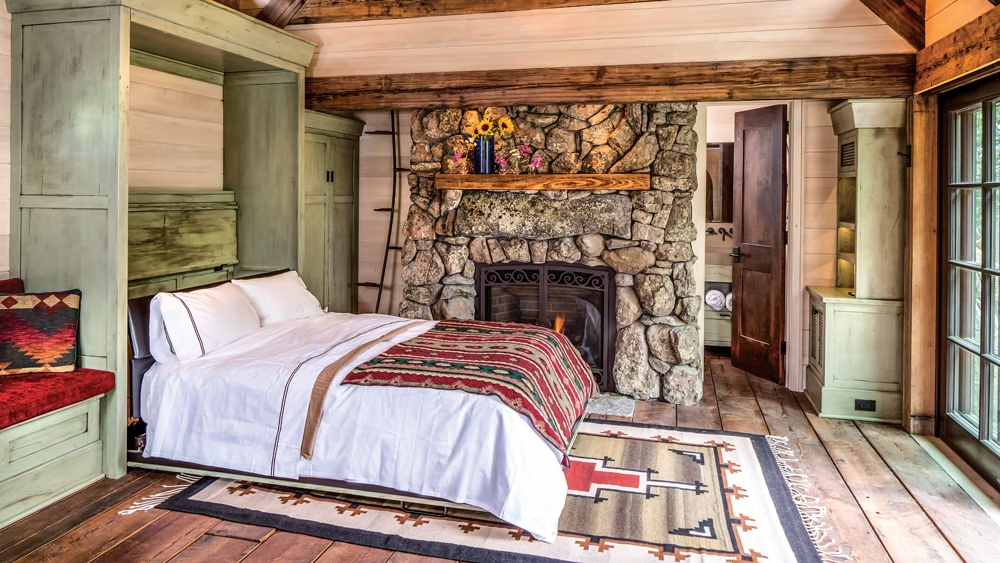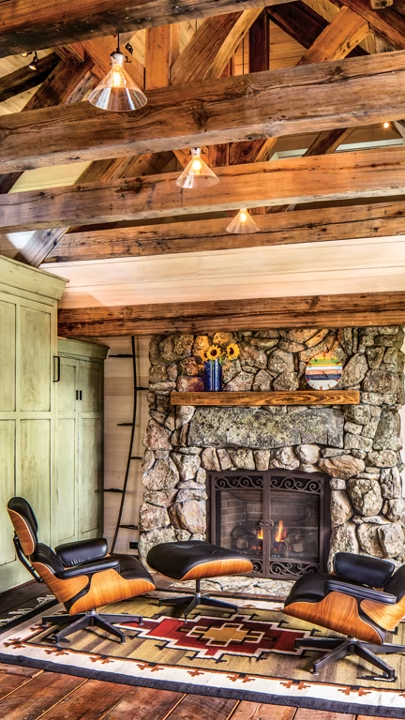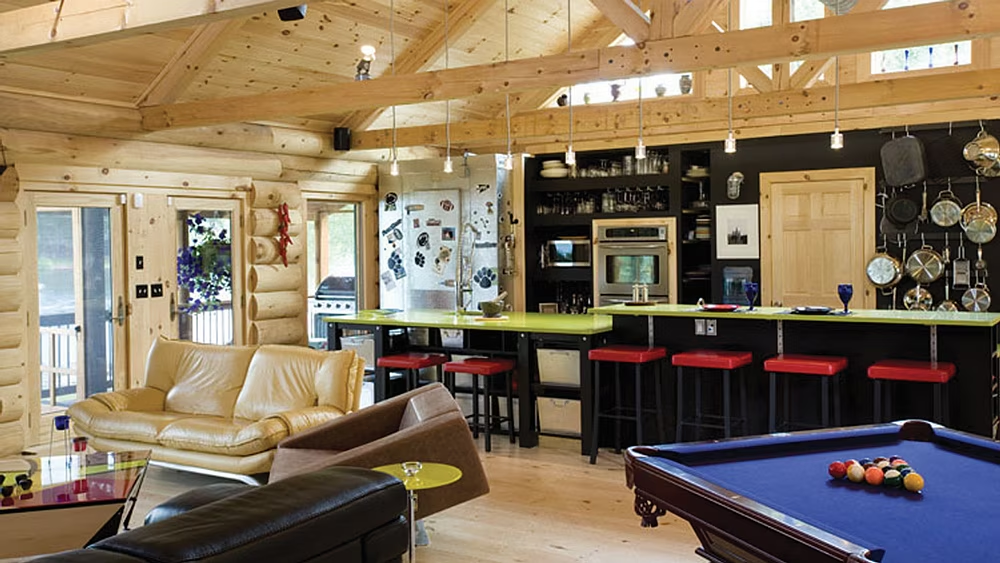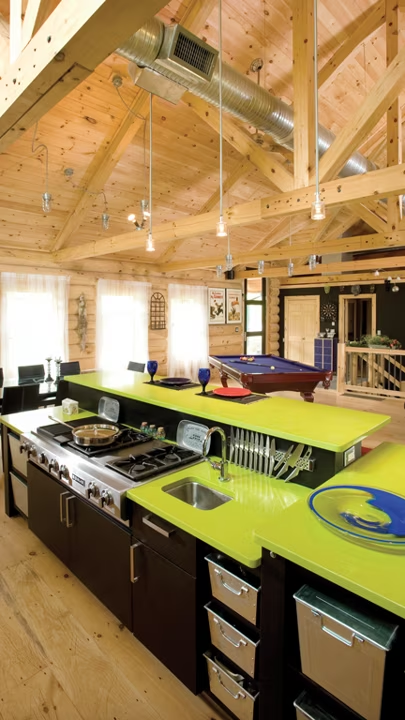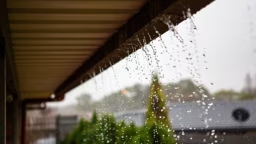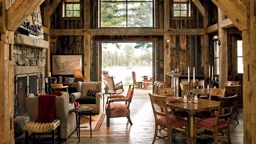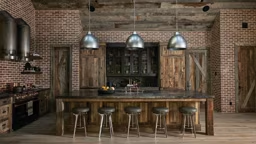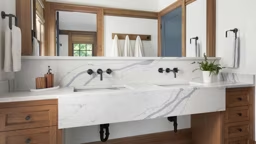When you’re searching for that perfect log or timber home floor plan, you’re not simply looking at flat lines on paper — you’re choosing colors and finishing materials in your mind and picturing the rooms in three dimensions; in short, envisioning how these spaces will work for you and your family. These six emerging trends will be around for the long haul.
1. Organic shapes and materials.

In this arena, log and timber homes have always enjoyed an edge over other types of construction, but this growing trend in conventional housing is evolving in the L&T world, too. Handcrafting and working with the natural shape of a tree, rather than taming it into submission, is surging in popularity. The trend also extends to fixtures and decor. While antler chandeliers have been a rustic-home staple for eons, other natural materials, like shells, leather, rattan, reeds and twigs are finding their way into everything from lighting to drawer pulls.
2. Indoor/Outdoor Living Extensions.

Log and timber home enthusiasts are no strangers to blurring the lines between indoor and outdoor living. It’s part of the legacy of this lifestyle. But today’s buyer is looking beyond an extended deck or a deep front porch — even beyond floor-to-ceiling windows — to take in the view. Modern log and timber homeowners want the ability to make a wall disappear via a folding window wall or garage-style retraction, and in doing so, create a seamless transition from an interior living room to its outdoor extension.
3. Indoor Gardens.

If there are a few positives to be had from the COVID-19 pandemic, one is that people found a new appreciation for their homes and took a good, hard look at how well they function to support their lifestyles. One aspect of that reexamination is a renewed interest in growing one’s own produce. Sure you can do that outside, if you have the land, but why stop there? Biophilic design (i.e., indoor gardens, living walls, conservatories and built-in greenhouses) provides an opportunity to cultivate plantings year-round without providing a buffet for bugs and other crop-eating critters. They also help improve your indoor air quality, not to mention your home’s natural beauty.
4. Multifunctional Spaces.
Photo: Bill Mathews
See more of this home here.
Borrowing from the “less is more” adage, not to mention the continuing desire to downsize, it’s advantageous to economize where you can as you design your floor plan. Need a home office? Of course you can utilize a guest bedroom, but you also could carve out a nook in your kitchen or convert a spare closet. Planning a formal dining room for special occasions? The addition of a retractable Murphy bed could provide sleeping space for the occasional overnight visitor without the need for a dedicated guest room. With walls of built-in shelving, it can also double as a library. Have space for a loft? This is a perfect perch for a kids’ play area, a craft room or even a home gym (or a combination of all three!) Need an eat-in kitchen? Skip the oversized fixed island and go old school with a large farm table that can handle anything from food prep to informal dinners to after-school homework sessions (with snacks).
5. Kitchens with Color.
Photo: Estemerwalt Log Homes
For nearly a decade, white kitchens have dominated the design scene. While white is still relevant, there is a growing trend toward infusing the kitchen with color, including the return of wood-toned cabinetry. But the key to keeping it modern lies in the species and tones you choose, as well as the way you use it. Light bamboo is emerging as a popular choice for cabinets in a contemporary timber home. Butcher-block counters are another way to incorporate natural wood tones in a log home. But don’t fear color. Even if the safety of white cabinetry appeals to you, punch them up with a colorful countertop or a statement-making backsplash or flooring.
6. Color Infusion.

When it comes to color, log homes have traditionally been dominated by deep reds, dark greens and muted yellows wrapped around a range of brown tones. Classic timber frames have played with color more than their log home cousins, but often only as accents against a blank white canvas. With the new decade comes a new color philosophy: both log and timber homes are throwing convention out the floor-to-ceiling window and embracing a full spectrum of color in everything from paints and stains to appliances and fixtures.




